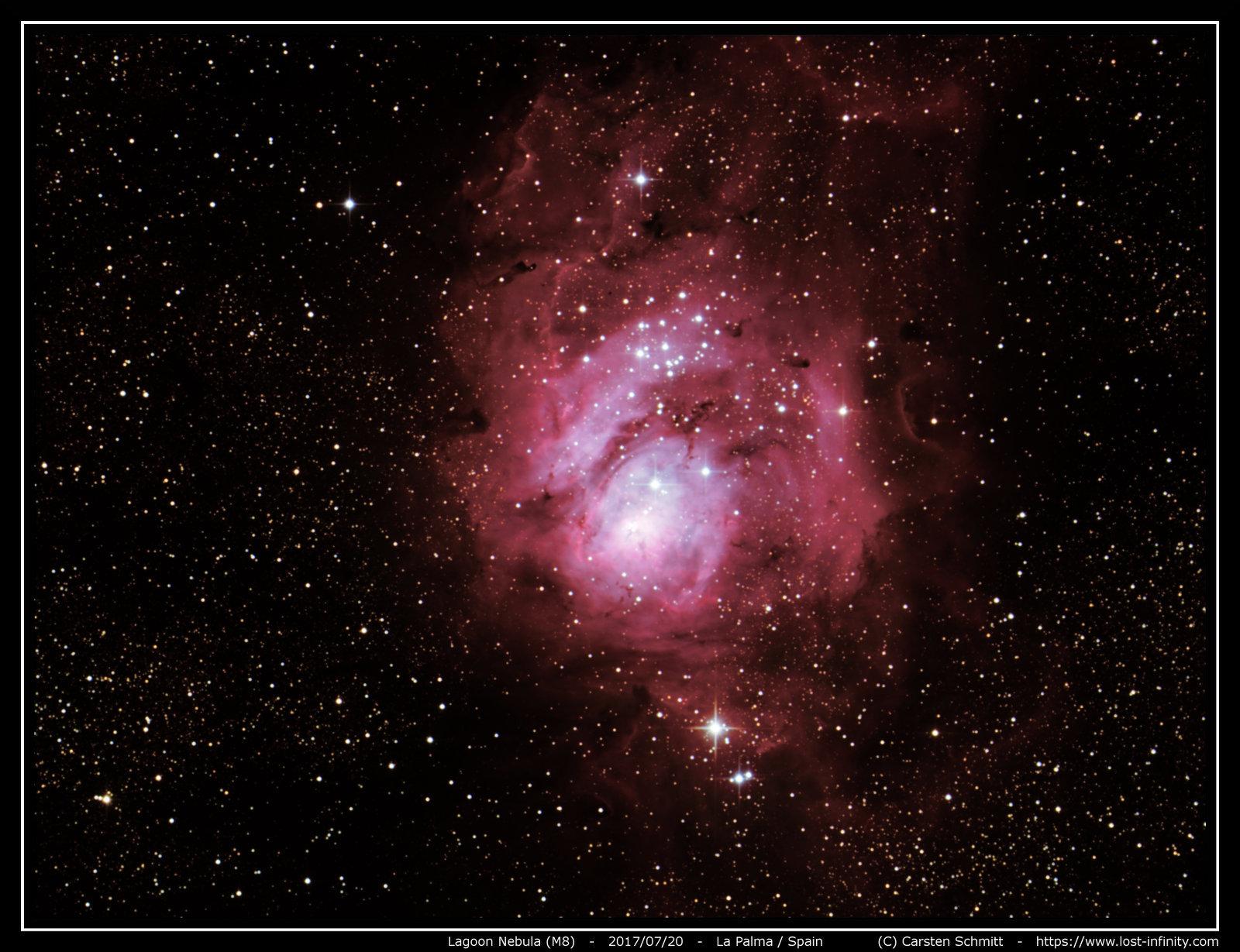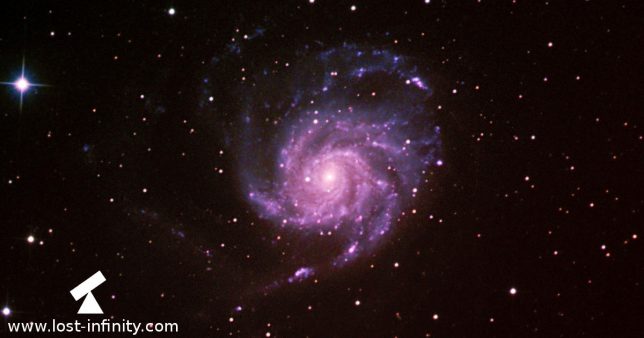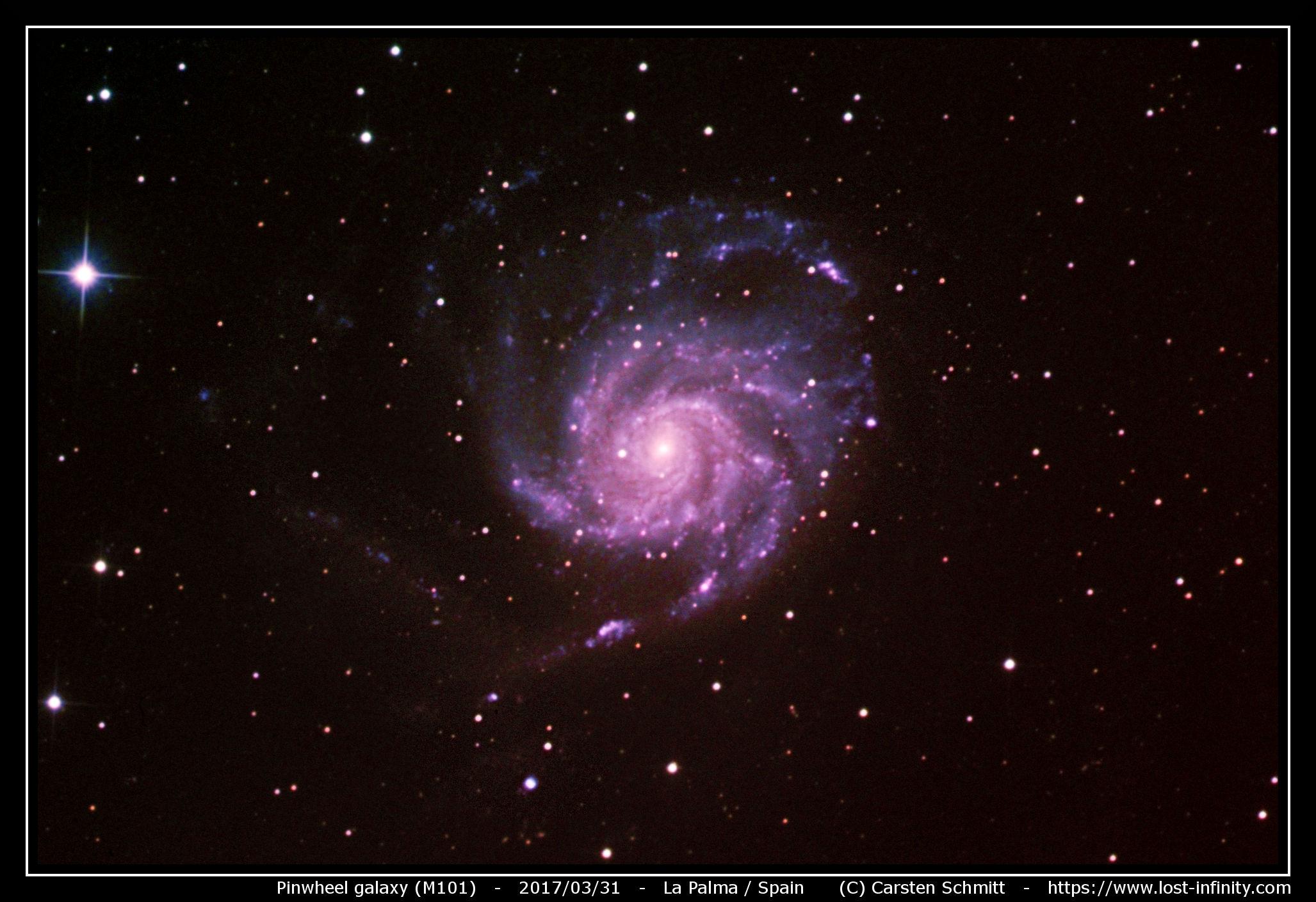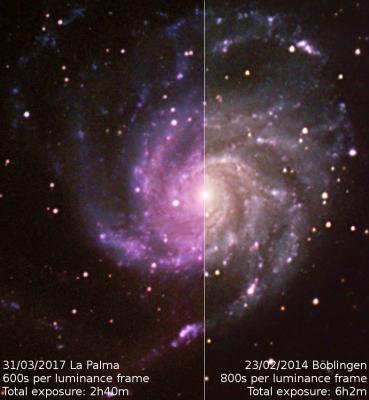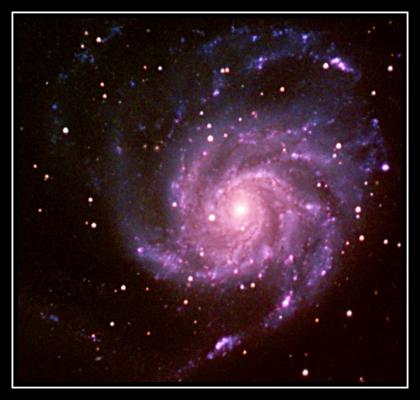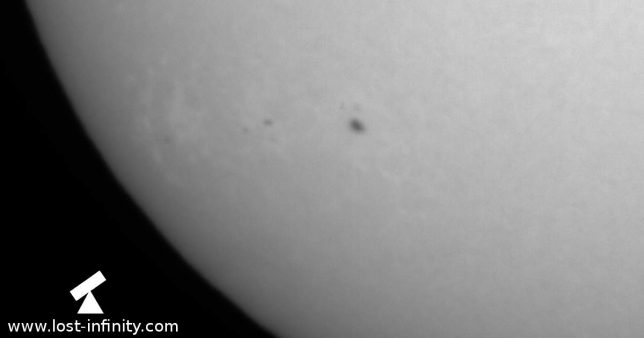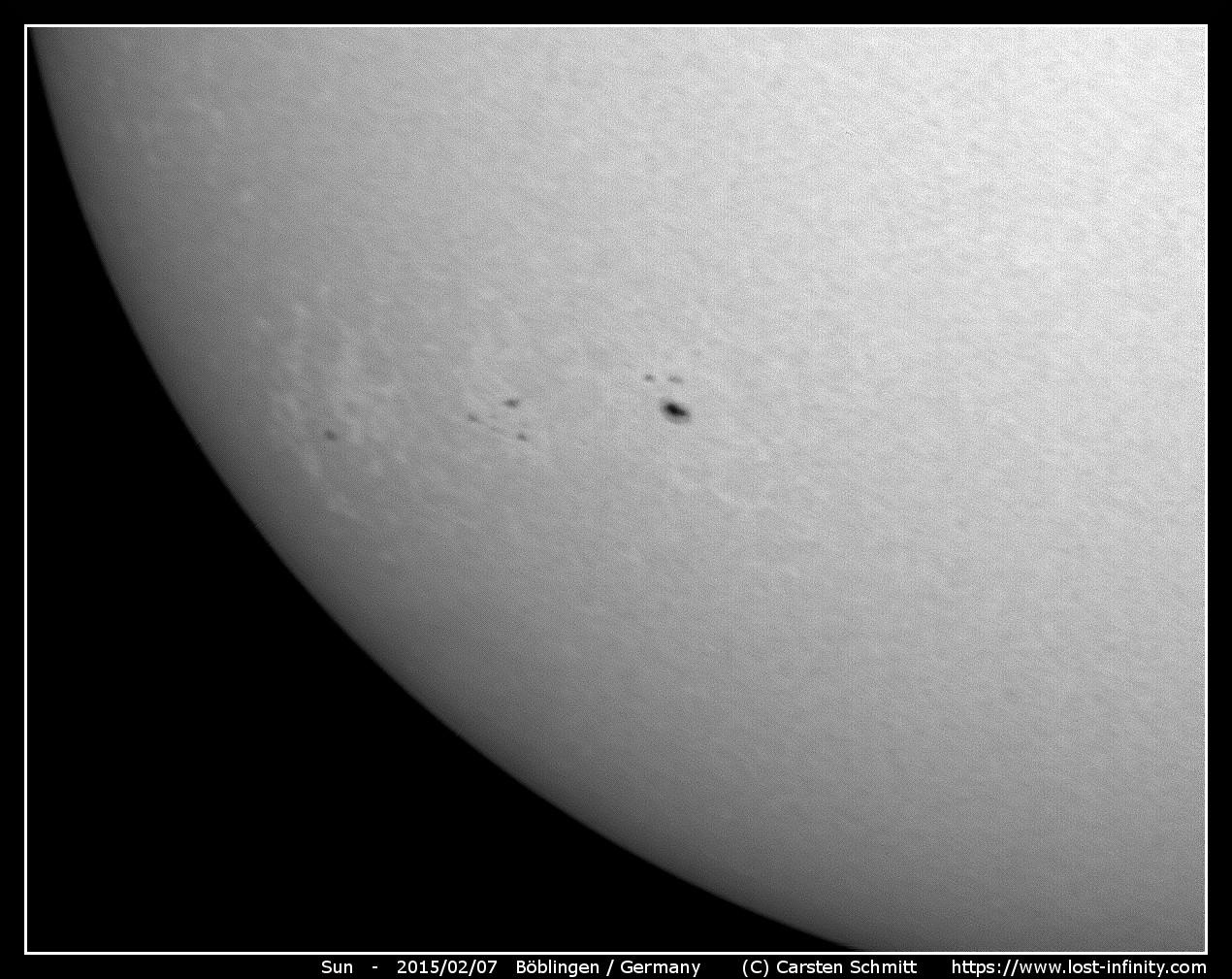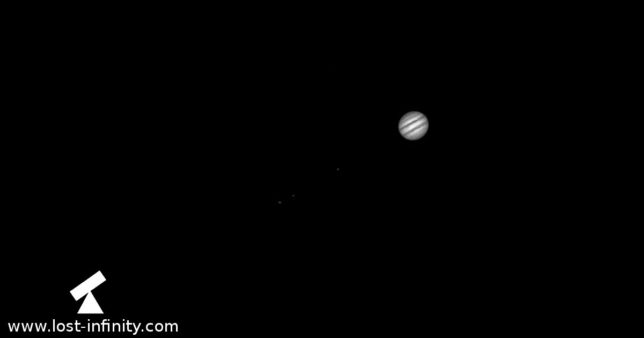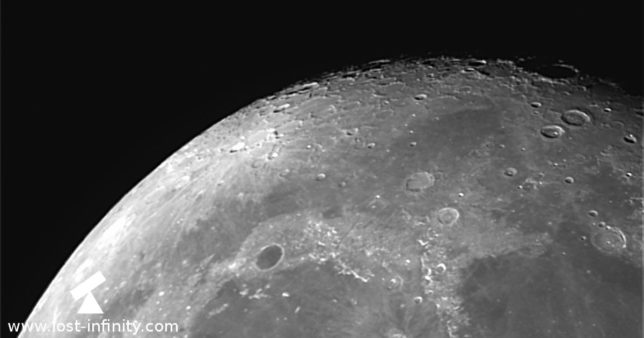Tonight I was able to proof that the “Lagoon nebula” M8 was still there ~4100 years ago – wow! With a teapot, a sunlounger (probably better a starlounger) and the right music the night passed quickly 🙂
The total exposure time was ~1h36m. The seeing conditions were around 2.2″. It was a clear night without wind. I used my 8″ GSO newton telescope with an Atik383L+ camera (see here). And again I am amazed which image quality is possible with this equipment on this dark sky within this short exposure time. Below is just the luminance part of the image which shows some sharp details of the nebula.
Continue reading →





























